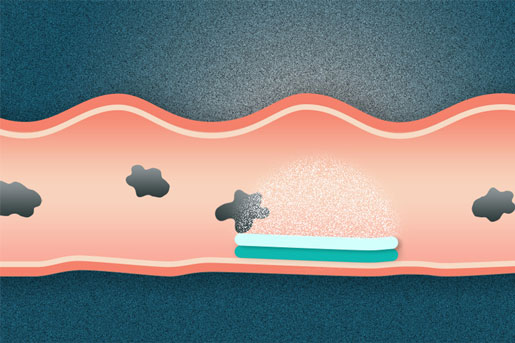New Material Can Stick It out in GI Tract
A team from MIT and Brigham and Women’s Hospital creates a pill device that sits in the gastrointestinal tract and enables extended drug release.
April 11, 2016

It's not easy to remember to take a pill three times a day. Doctors and patients, witnesses to the massive problem of compliance to prescribed therapies, can attest to that.
A new material used as part of a drug-device combination could help solve that problem. MIT and Brigham and Women's hospital researchers have developed what they call the Janus device to allow a pill to attach to a patient's gastrointestinal tract and prevent it from being swept away, according to an MIT press release.
The research, described in an article published recently in Advanced Healthcare Materials, titled "A Janus Mucoadhesive and Omniphobic Device for Gastrointestinal Retention," was conducted by a team that included prolific scientist Robert Langer and researchers affiliated with MIT's Koch Institute for Integrative Cancer Research and Brigham and Women's Hospital.
Learn about the latest medical device technology at the MD&M East Conference, June 14-16, in New York City. |
"This could be adapted to many drugs. Any drug that is dosed frequently could be amenable to this kind of system," Giovanni Traverso, a research affiliate at the Koch Institute and a gastroenterologist at Brigham and Women's Hospital, said in the release.
The material used is a type of "mucoadhesive," named for its ability to adhere to mucosal linings. Prior research with this type of material reached a roadblock in the GI tract, where food and liquid can easily knock it away.
Lead author Young-Ah Lucy Lee, a technical assistant at the Koch Institute, said in the release, "The challenge with mucoadhesives is that the GI tract is a very rough and abrasive environment."
The researchers solved this problem by adding an omniphobic, or repellent, surface to the other side of the device. According to the MIT release, the mucoadhesive surfaces uses the Carbopol polymer while the repellent surface uses a cellulose acetate designed with a hydrophobic texture similar to that of a lotus leaf. The study authors described this as a "bioinspired soft lithography that is facile and low-cost to replicate the patterned micro/nanostructures of a natural lotus leaf." After that modification, the surface was fluorinated and lubricated to complete the omniphobic coating.
The two surfaces were brought together using a pill presser to form the Janus tablet, which gets its name from its two-faced nature. The release notes that researchers simulated the GI tract using a flow of liquids and food, finding that the Janus tablet stuck to pig intestinal tissue for the entire 10 minute-long experiment.
More animal studies are next to learn more about the material's capabilities. Beyond potentially offering an easier drug schedule, using only the omniphobic material may hold the possibility of easy-to-swallow pills.
"Texturing the surfaces really opens up a new way of thinking about controlling and tuning how these drug formulations travel," Traverso said in the release.
[Image courtesy of CHRISTINE DANILOFF/MIT]
About the Author(s)
You May Also Like


